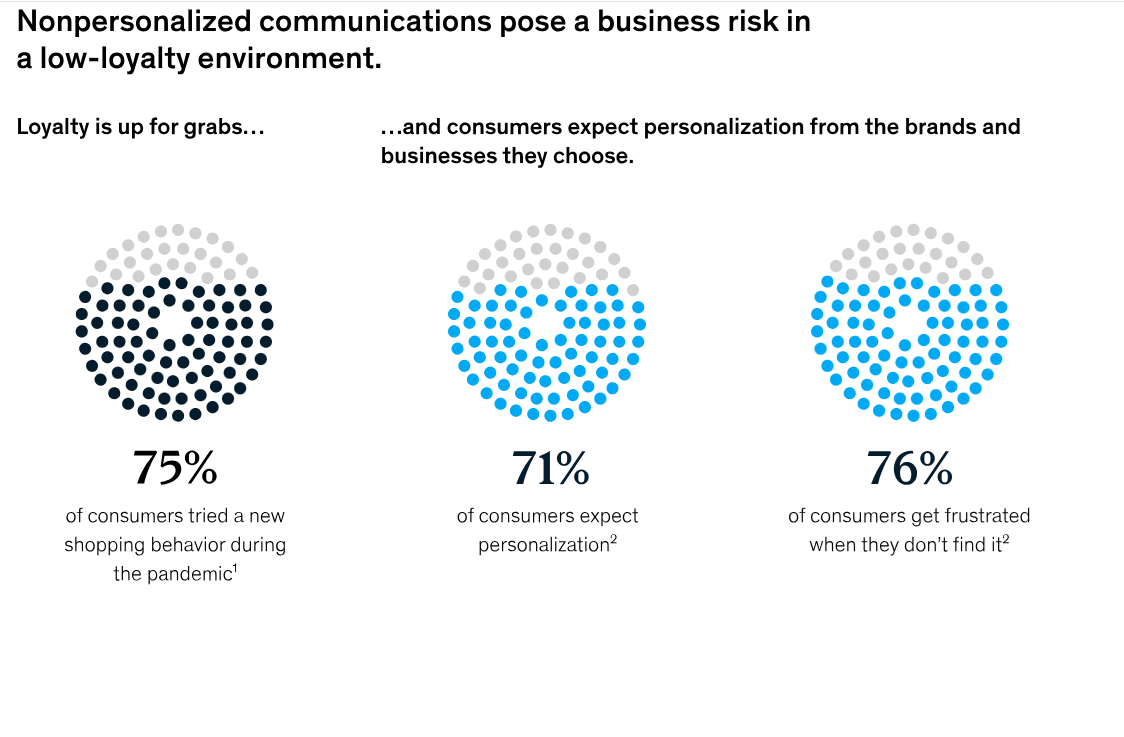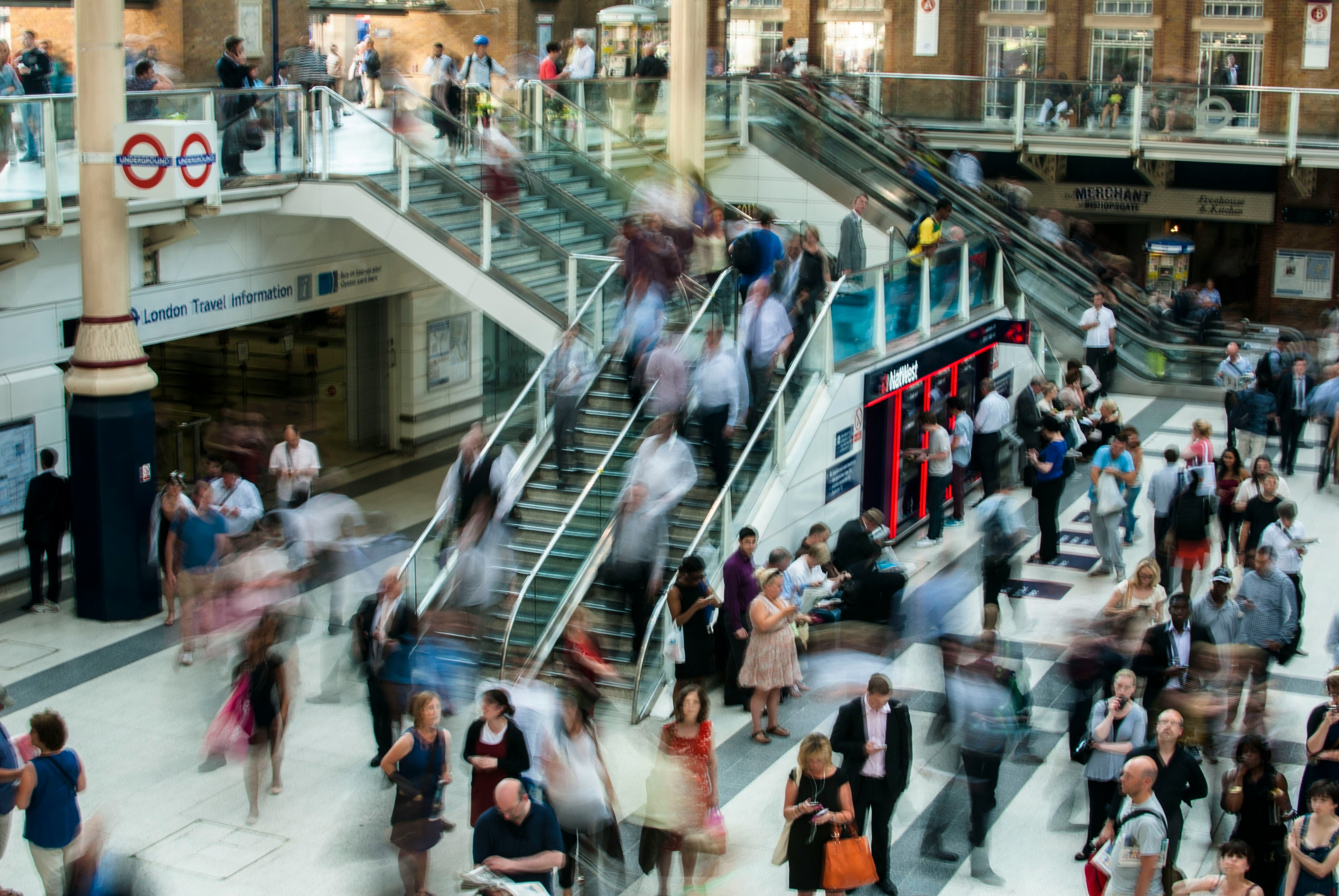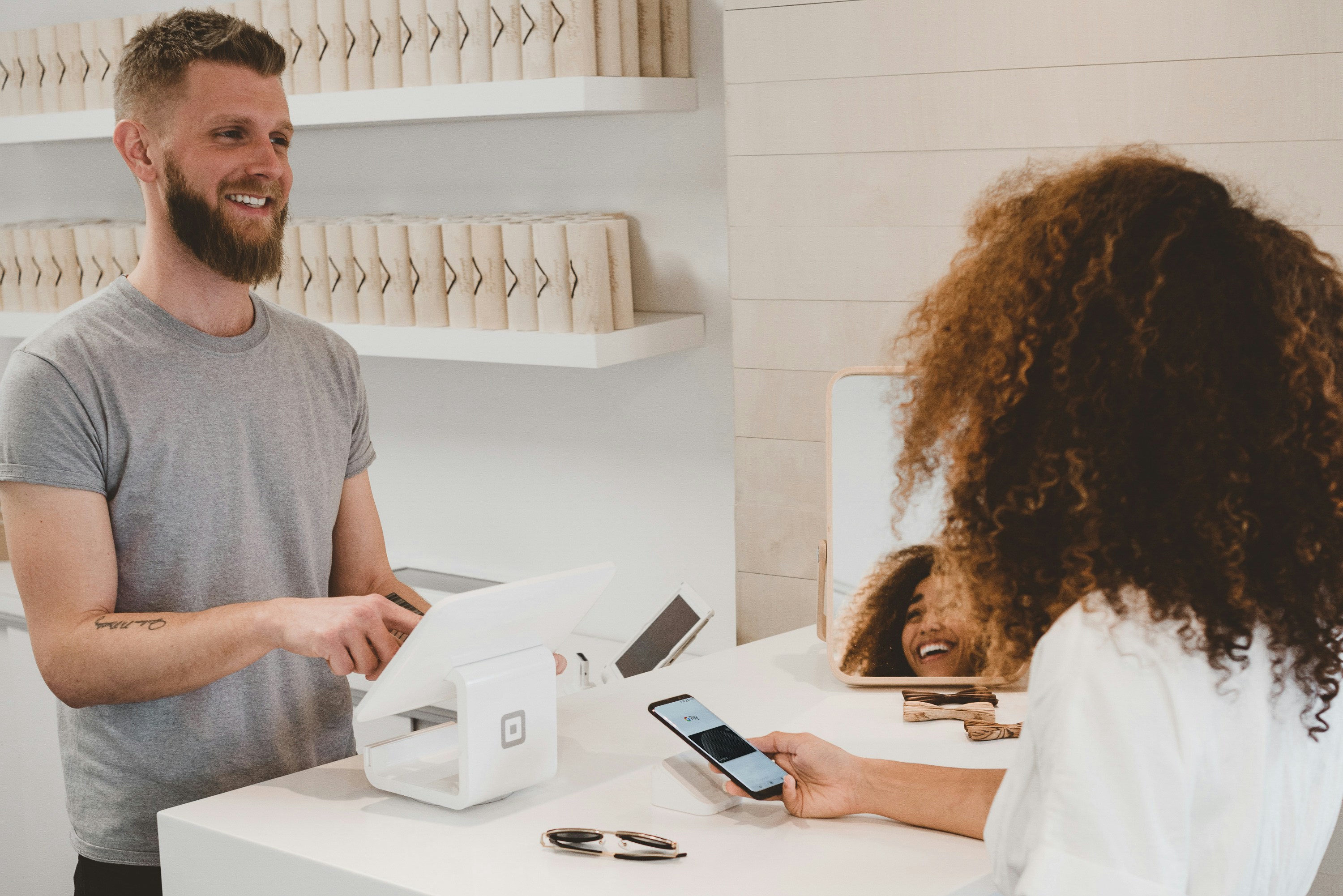Personalization at Scale: Using Digital Signage to Deliver Relevant Messages
When customers walk into a store, they've already shown intent. They’re curious about your brand, your products, and what the experience will feel like. That first moment inside is one of the most valuable marketing opportunities a retailer has. It’s a chance to shape perception and influence decisions.
This is where digital signage comes in.
For years, it has been used to catch attention with bright screens and rotating ads. But now it’s becoming much more than that. It’s evolving into a dynamic platform for personalization and engagement that can fundamentally change how brands connect with customers.
Research shows that 64 percent of shoppers are more engaged with brands that use digital signage strategically, a clear signal of where in-store experiences are heading. Let’s look at how to make that shift, from building the right technology foundation to adopting tools that power real personalization and equipping store associates with insights that bring it all together.
How Personalization Became the New Standard
Today, retailers face a world where they must maximize revenue per square foot while meeting dramatically shifting customer expectations. Shoppers don't just want great products; they want great experiences that feel tailored to them. Online, this has already become the norm. Mobile shopping experiences mean algorithms can predict what people like, recommend products accordingly, and personalize results based on historical user data.
However, the offline story is very different. Most in-store experiences remain generic, with every shopper seeing the same promotions, visuals, and messages. That's a missed opportunity because the same personalization online has helped retailers capture huge market segments.
According to McKinsey, 71 percent of consumers expect personalized interactions, while 76 percent feel frustrated when they don't get them. And it's not just about customer satisfaction, the revenue impact is significant. Personalized offers deliver returns up to three times higher than mass promotions.

But creating personalization in a physical environment isn't as simple as it is online. Without cookies or the same level of tracking, retailers need to rethink how they approach technology to cater to this new demand.
Start With Technology Optimization
A critical piece to getting personalization right in the offline retail environment is to build the right technological foundation. This requires two things: good data and smart technology.
Good Data
Most retailers already have valuable customer insights scattered across point-of-sale (POS) systems, e-commerce analytics, loyalty programs, and CRM tools. The challenge is that these systems often operate in silos.
Centralizing that data into a unified Customer Data Platform (CDP) brings it all together into one cohesive view. A CDP allows brands to segment audiences, identify purchasing patterns, and coordinate in-store messaging with online behavior. When someone logs into the brand's app or redeems loyalty points, those signals can inform what they see on a nearby screen. When this is optimized carefully, it can deliver personalized experiences that feel natural and not forced.
Smart Technology
Once the data foundation is in place, technology becomes the next layer of personalization. These tools have existed in retail environments before, but making them context-aware and responsive is where the real value lies in terms of personalization.
QR Codes: These create a practical connection between personalization and privacy. When customers scan a code on a display, they can access offers that match their interests, check local inventory, or learn about new products. Because the interaction starts with the customer’s choice, it feels voluntary and transparent. And at the same time, it gives brands useful insight into customer preferences and behavior.
AI-Enabled Cameras: Visual AI brings another level of intelligence. These systems don't identify individuals; they detect general traits such as age range, gender, or group type. That allows stores to market by cohort or demographic. Teens might see sneaker promotions, adults might see wellness products, and parents might see school-related offers. This allows the messaging to stay relevant and timely without crossing privacy lines.

Individually, these updates may appear incremental, but together, they create a context-aware and responsive store ecosystem. This significant enhancement allows retailers to better engage with customers, tailoring the experience to their immediate needs and preferences.
Other Technologies
Personalization doesn't end with analytics and cameras. New innovations like augmented reality are pushing the boundaries of what digital signage can do.
Smart mirrors, for example, let customers virtually try on clothing or makeup, allowing them to instantly see how products look without physically trying them on. The impact is measurable: in one instance, Sephora's AR mirror trials led to an estimated 31 percent increase in sales, with users who engaged with the AR try-on showing conversion rates up to 90 percent higher than those who didn’t.
Grocery stores too are experimenting with interactive recipe boards that recommend complementary ingredients based on what's in a shopper's cart. All these interactions create feedback that helps brands understand engagement patterns and improve campaign performance. The smarter the feedback loop, the more personalized and effective the system becomes.
Empower Store Associates
When it comes to personalization, technology often gets all the spotlight, but it’s important to remember the value of store associates in retail environments. Human connection is a cornerstone of great retail experiences. Store associates remain a vital part of that connection and empowering them with the right tools makes personalization truly complete. Not every retailer is there yet, but the shift is happening quickly.
Mobile tools that sync with the customer data platform can give associates quick insight into a shopper’s preferences or past purchases. This allows them to make helpful suggestions like pointing out a restocked item the customer had previously shown interest in, or letting them know about a loyalty reward they can redeem.
These small, relevant interactions make customers feel understood without crossing boundaries.
The Future of In-Store Personalization
The future of retail is about merging physical and digital experiences seamlessly. Customers should feel that the store understands them as well as a website or app does. Every product recommendation, display, and message should feel intentional and timely.
At the end of the day, personalization isn’t about flooding the space with more screens or louder ads. It's about relevance. It's about technology that enhances human experience rather than replacing it. When personalization is done thoughtfully and at scale, it builds loyalty, advocacy, and long-term value.
As retail continues to evolve, digital signage will be one of the most important tools for curating brand experiences. The retailers who master this balance will redefine what in-store engagement looks like for the next decade.
Coffman Media is Your Guide & Partner in Retail Personalization
Is your franchise struggling to keep pace with changing customer expectations? For almost two decades, the Coffman Media team has been helping businesses build digital signage and technology solutions that help keep them ahead of the competition. Contact us any time with your questions!
________________________________________
Ready to Get Started with Digital Signage?
Get in touch with our team so we can chat about your vision and what kind of digital signage would be best for your business to attract more customers and keep them engaged.



